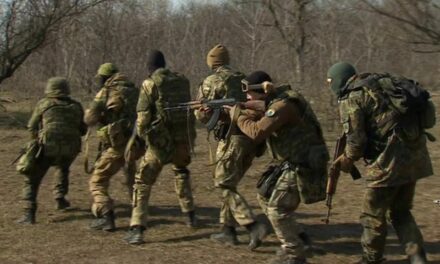The past several weeks have seen Russia’s war on Ukraine stalled, with little movement in the front lines by either side. Back in the springtime, there was much optimism that Ukraine would mount major counteroffensives that would push the Russians back and enable Ukraine to regain the territories that the Russian forces had captured in the early phases of this war. Ukrainians were encouraged by the liberation of Kherson last November, and it was subsequently felt that it was only a matter of time before their military would cut the land bridge to Crimea, force the Russians to evacuate the peninsula and recapture all the occupied territory in Eastern Ukraine.
Regrettably, despite much effort and many casualties, those counteroffensives have stalled, and though the Ukrainian forces are continuing to recapture occupied territory, their progress has been slowed considerably, with gains now measured in metres rather than kilometres. The Russians have reverted mostly to creating strong and deep defensive lines, though they are still trying to break through the Ukrainian defenses in places such as Bakhmut, Kupiansk and Avdiivka. Those efforts have been an abject failure, as their mass frontal attacks have only succeeded in creating horrendous casualty figures amongst their troops, and the loss of many of their tanks and armoured vehicles.
The Ukrainian counteroffensive has focused primarily on three specific targets, namely the area south of Orikhiv on the Zaporizhian front, the recapture of Bakhmut, and the establishment of a bridgehead on the eastern bank of the Dnipro River northeast of Kherson. The Zaporizhian front has been especially problematic, since the Russians have had plenty of time to construct strong defensive lines, often three deep and protected by minefields that extend to 20 kms. in some places. The Ukrainian military lacks the necessary equipment to deal with such extensive minefields in a timely manner and is reluctant to risk the lives of its troops in mounting frontal attacks under such conditions. They have reverted instead towards degrading Russian fighting capability by attacking their behind-the-lines logistics network and supply depots. Though they have achieved much success with this strategy, they are limited by the lack of longer-range missiles and drones, as well as attack aircraft that can neutralize Russia’s advantage in the skies. Ukraine has been dependent on its allies for providing such military aid, yet has encountered a puzzling reluctance in them for providing longer range munitions, ostensibly because of fears of “escalating” the conflict. Ukraine has been working hard on creating their own production facilities for making such weapons, but it will take time for those to start producing what Ukraine needs.
Thus, Ukraine is now facing the prospect of a much longer war than it would have liked, one more akin to a war of attrition rather than rapid movement. Nonetheless, there is still cause for long-term optimism. Despite the current lack of progress in the ground fighting, the Ukrainian military has achieved some significant successes of late that will hold it in good stead in the longer term. Despite having minimal naval resources, they have been able to neutralize Russia’s Black Sea fleet, sinking some twenty vessels and forcing the remainder of the fleet to relocate from Sevastopol to safer harbours in the eastern end of the Black Sea. They have demonstrated their capability of damaging and disabling the Kerch Bridge which is crucial to the Russians in supplying their forces in Crimea.
On the ground, they have succeeded in significantly impairing the Russians’ combat capability. They have killed some 300,000 Russian troops, and though the Russians may appear to have virtually unlimited numbers of replacements, the troops that have been killed have deprived the Russian military of combat experience that will be hard to replace. The Russians are now scraping the bottom of the barrel with their replacements that now consist of a lot of convicts, raw teenage recruits and forced conscripts whose morale and motivation leaves much to be desired. The other major blow is that after almost two years of war, Russia has lost the majority of its most modern tanks, armoured vehicles, planes, helicopters, missiles and other sophisticated military weaponry that it will take years to replace because of the sanctions Russia currently faces. All this has eroded and negated Russia’s ability to mount any serious new offensives. Ukraine, on the other hand, is being supplied with increasing numbers of new and more capable weaponry from its western allies that over the longer term will give it a significant edge in fighting the Russians.
The bottom line is that though it may appear that Ukraine’s offensives are not succeeding, one should view the current situation as just a temporary pause while the more than capable staff of the Ukrainian military figure out newer and different strategies and tactics on how to defeat the Russians. They have been creative and adept at doing this all throughout this war, and I have little doubt that they will rise to the occasion once again, and we will have something to cheer about in the coming months.
Share on Social Media

































